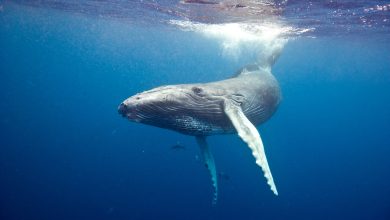5 Interesting Facts About Marine Life

Marine life, which encompasses the vast array of flora and fauna found in the world’s oceans, is a cornerstone of Earth’s ecosystem. From the smallest plankton to the largest whales, marine organisms play vital roles in maintaining ecological balance and providing resources essential for human survival.
The oceans cover more than 70% of our planet’s surface and serve as a critical buffer against climate change by absorbing carbon dioxide and regulating temperature. The diversity of marine life is astonishing, with millions of species adapted to thrive in every imaginable environment, from sunlit coral reefs to the darkest ocean trenches.
Understanding and appreciating the importance of marine life not only enriches our knowledge of the natural world but also underscores the need for concerted conservation efforts to protect these invaluable ecosystems for future generations.
Fact 1: Bioluminescence
Bioluminescence is a fascinating natural phenomenon wherein living organisms produce light through a chemical reaction within their bodies. This otherworldly glow can be observed in a variety of marine species, such as jellyfish and anglerfish, often creating a spectacular display in the dark ocean depths. For these creatures, bioluminescence serves multiple survival purposes. It can act as a lure to attract prey, as seen in the anglerfish, or as a means of communication among species.
Additionally, it can be used as a defense mechanism to confuse predators or to camouflage amidst the dim light of the deep sea. Thus, bioluminescence is not just a mesmerizing display but a critical adaptation for the survival of many marine organisms.
Fact 2: Deep-Sea Giants
Gigantism in marine environments, especially in the mysterious depths of the ocean, is a captivating and eerie phenomenon. Among the most notable examples of this are the giant squid and the colossal squid, which have inspired countless legends and scientific inquiries. These enormous creatures, which can reach lengths of up to 43 feet or more, navigate the shadowy, pressurized realms deep below the ocean’s surface.
Several theories attempt to explain why such gigantism occurs in deep-sea animals. One prevalent theory is the “deep-sea gigantism hypothesis,” which posits that larger body sizes are advantageous for survival in the cold, high-pressure, and low-energy deep-sea environment. Bigger bodies are thought to move more efficiently over long distances in search of scarce food and may also have better thermal regulation and longevity. Thus, the extreme conditions of the deep ocean not only allow but may actually promote the growth of these awe-inspiring giants.
Fact 3: Coral Reefs’ Diversity
Coral reefs are often referred to as the rainforests of the sea, due to their staggering biodiversity and intricate ecosystems. These vibrant underwater structures are primarily composed of calcium carbonate, secreted by tiny marine animals known as corals. Coral reefs play an essential role in marine ecosystems by providing habitat and shelter for approximately 25% of all marine species, despite covering less than 1% of the ocean floor.
The high biodiversity found in coral reefs is a result of the complex and varied physical environment they create, which supports a multitude of niches for different organisms. Species such as colourful parrotfish, elusive moray eels, and majestic sea turtles can be found thriving among the coral branches.
Additionally, brightly hued anemones and sponges add to the picturesque scenery of these underwater wonders. The immense variety of life that coral reefs support not only underscores their ecological importance but also highlights the critical need for their conservation in the face of climate change, pollution, and other anthropogenic threats.
Fact 4: Marine Animal Communication
Communication among marine animals is a sophisticated and diverse field, highlighting the complex social structures and survival strategies of oceanic life. Marine creatures employ a variety of communication methods such as echolocation, songs, and body language to interact and coordinate within their environments. Dolphins, for example, use echolocation to navigate and locate prey effectively, emitting a series of clicks and listening for the echo to pinpoint objects around them.
Similarly, whales are renowned for their melodious songs that can travel incredible distances underwater. These songs serve not only as a means to attract mates but also to establish territories and maintain social bonds within pods.
The significance of these communication systems extends to hunting as well; coordinated hunting strategies, often observed in species like killer whales, rely heavily on intricate communication to successfully capture prey. Ultimately, the study of marine animal communication reveals a world where sound and signals are vital for survival, social cohesion, and the intricate dance of life beneath the waves.
Fact 5: Ocean Depths and Exploration
The deep oceans, often dubbed the final frontier on Earth, remain largely unexplored, with more than 80% still uncharted and unmapped by modern technology. The mysterious and vast nature of these depths holds tremendous potential for discovering new species and understanding the full breadth of marine biodiversity.
The importance of deep-sea exploration cannot be overstated; each expedition has the potential to reveal groundbreaking insights and unknown organisms. Recent years have seen remarkable discoveries, such as the identification of new species like the “Dumbo” octopus and the enigmatic Yeti crab, as well as the uncovering of deep-sea hydrothermal vents teeming with unique life forms.
These discoveries not only enrich our understanding of marine ecosystems but also highlight the resilience and adaptability of life in extreme conditions. Exploration of the deep ocean is essential for advancing scientific knowledge, fostering conservation efforts, and inspiring a renewed sense of wonder about our planet’s hidden realms.
Conclusion
Marine life is an endlessly captivating subject, filled with incredible phenomena and awe-inspiring creatures. From the mesmerizing glow of bioluminescent species and the extraordinary size of deep-sea giants to the vibrant diversity of coral reefs, the sophisticated communication systems of marine animals, and the uncharted mysteries of the ocean depths, there is so much to learn and marvel at in the underwater world. Each fact about marine life not only enriches our understanding but also ignites curiosity and a sense of wonder about the planet’s vast and largely unexplored blue frontier.
As you reflect on these fascinating aspects of marine life, I encourage you to delve deeper into the study of the ocean and its inhabitants. Whether you are an aspiring marine biologist, a passionate diver, or simply a nature enthusiast, there is always more to discover and appreciate about the sea. Educating yourself about marine ecosystems and the species that inhabit them is the first step toward contributing to their preservation.
Now more than ever, it is crucial to support marine conservation and protection efforts. Our oceans are facing unprecedented threats from climate change, pollution, overfishing, and habitat destruction. By advocating for sustainable practices, reducing plastic use, supporting marine protected areas, and contributing to conservation initiatives, each of us can make a difference in safeguarding these precious ecosystems for future generations.
Let us unite in our efforts to protect and preserve the incredible marine life that calls our oceans home. Together, we can ensure that the wonders beneath the waves continue to thrive and inspire awe in all who encounter them.




